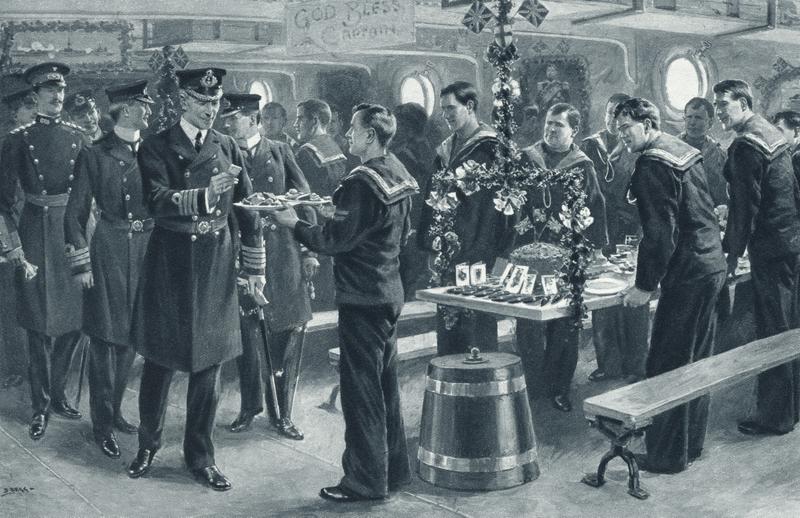Christmas Past
By | December 9, 2018

Christmas traditions from the past were quite a bit different than they are today. Families would always come together to celebrate. A big meal would be served on Christmas Day with all the relatives present around the table including aunts, uncles, parents, grandparents, cousins, and siblings. Entire towns and cities would decorate the town with the citizens and neighbors having cheerful words on their lips during that time of year unless of course, they were like the old miser, Mr. Scrooge with a ‘bah humbug’ on his lips. Today, the family unit has strayed away from the traditional Christmas celebrations of old, as many are displaced from their families, such as those families where the children are split between two different households or the family is divided on which in-laws’ home to go to. But in Christmas past . . .
Even during World War I, Christmas was celebrated on the ship in the North Sea with the Captain enjoying the tasty goods of the men’s dinner. They even had decorations aboard. It was a tradition for the officers, along with the Captain, to visit the men during dinner with the cook standing at the end of each table to offer them a sampling of the meal. Exchanging expressions of good cheer, they moved from table to table. Even officers of the Grand Fleet would provide Christmas meals for their families at home.


Before the reign of Queen Victoria, no one in Britain had ever heard of Santa Claus and no one took a holiday from work or sent out Christmas cards. During the industrial revolution, wealth and technology had a hand in changing that. With books like Charles Dickens’ “Christmas Carol” that was published in 1843, the wealthy, as well as those who were not so wealthy, were inspired to give money and gifts to the poor. Time off from work for the middle-class families began involving two days, Christmas Day and “Boxing Day.” Boxing Day was the day after Christmas when the servants and working people opened their boxes that they had received from the “rich.” Eventually, with the help of factories, children’s toys were made in mass production to produce books, dolls, games, and other toys that were affordable for middle-class children. In 1870, for the poor children, they received a Christmas stocking with an apple, orange, and a few nuts. In that same year came, who was to be known as, “Santa Claus” originating from the story of St. Nicholas (or Sinter Klaas in Holland). It wasn’t until the end of the century when most people were able to have turkey at Christmas because it was too expensive.


In December of 1800, the first White House Christmas party was held by President John Adams and his family. One of the most elaborate parties held at the White House was by President Andrew Jackson in 1835 that included games, dancing, grandiose dinner, and even an indoor ‘snowball fight’ made with cotton balls. The first Christmas tree was put in the Second Floor Oval Room in the White House by President Benjamin Harrison in 1889 and also decorated with toys, candles, and ornaments. Usually, the tree would be put up in the White House dependent on whether or not there would be young children or grandchildren present during Christmas. The year 1891 brought electricity to the White House so three years after that, a Christmas tree with electric lights was set out on the White House lawn during President Grover Cleveland’s presidency. Part of President Franklin Roosevelt’s family Christmas tradition was him reading Charles Dickins’ “Christmas Carol” to the family.
Remembering the Christmas traditions from the past gives hope for the Christmas of the present and the future.

